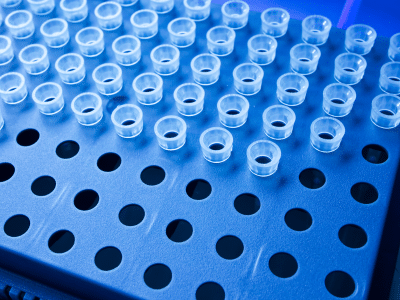The blood sample tubes homogenization and centrifugation is the pre-analytical process critical phase. It is indeed a non-conformities source and determines the analysis results reliability.
Two “technical” dimensions must be taken into account:
- compliance with time limits between sampling and centrifugation
- Centrifugation itself: the inversions number needed and the values to be applied to the three metrological quantities for a successful blood collection tubes centrifugation
An essential dimension must also be controlled: the metrology of your centrifuges.
Blood collection tubes centrifugation and homogenization: technical reminders
Type of tube for blood test | Color of the tube for blood test | Number of inversions | Minimum time between sampling and centrifugation (in minutes) | Maximum time between sampling and centrifugation (in hours) | Centrifugation Speed (V in g) Time (T in minutes) Temperature (t in °C) |
| Sodium citrate tube 3.2 or 3.8% | Transparent light blue | 4 to 5 | X | 2 to 4 | V 2000-5000 T 15-20 t 20-25 |
| Dry tube | Red | 6 to 8 | 30 | X | V 1300 T 10 t 20-25 |
| Dry gel tube | Red or Yellow | 6 to 8 | 30 | X | V 1600-2000 T 10 t 20-25 |
| Lithium or sodium heparin tube | Light green | 6 to 8 | X | 2 | V 1300 T 10 t 20-25 |
| Lithium heparin tube and gel | Light blue | 6 to 8 | X | 2 | V 1600 – 2000 T 10 t 20-25 |
| Tube EDTA K2 Blood Tube EDTA K2 Plasma | Violet | 6 to 8 | X X | X 2 to 4 | X V 1300 T 10 t 20-25 |
| Tube EDTA K2 Gel | Violet | 6 to 8 | X | 2 | V 1600-2000 T 10 t 25 |
| Glycolysis inhibitor tube | White | 6 to 8 | X | < = 48 | V 1300 T 10 t 20-25 |
| Tube citrate de sodium ESR | Black | 6 to 8 | X | X | X |
Complete metrology of your laboratory centrifuges: that makes the difference !
Rotational speed, cycle time, and temperature, you must master all the physical quantities of centrifugation to ensure a correct pre-analytical phase of your blood tubes.
Speed and cycle time are common measurements. Temperature – taken at a fixed point – too. But… When the accessories are charged, and the lid folded down, your centrifuge becomes a real “black box” whose thermal phenomena have long remained unknown. Indeed, the temperature measured at a fixed point, near the control probe, is not representative of the centrifugation chamber entire volume temperature. To overcome this difficulty, the commonly proposed measurement method is that of maintaining the water sample temperature, i.e. the temperature difference after before the centrifugation cycle. This method does not allow to know if the temperature has exceeded the desired specifications during the cycle, nor to what extent, nor for what duration. This method also does not make it possible to know whether the temperature is homogeneous in the different housings – racks and nacelles – of the centrifuge, or whether the centrifuge temperature and all the elements is stable at the cycle beginning. Finally, the results of this test type are not very reproducible.
The measurement methods offered by almost all metrology service providers have not been completed.
The results give partially exploitable information. Insufficient centrifuge performance such as a temperature that would intermittently exceed specifications for the cycle duration could not be detected by the temperature measurements now available to you.
Only one service provider – the LABELIANS smart service metrological laboratory – has developed an accredited method that allows you to master this aspect.
If you want or need help to simplify and make more efficient your pre-analytical phases of blood samples, do not hesitate to contact us: we can develop with you from A to Z efficient, productive processes that will reduce the cost of your non-conformities.




